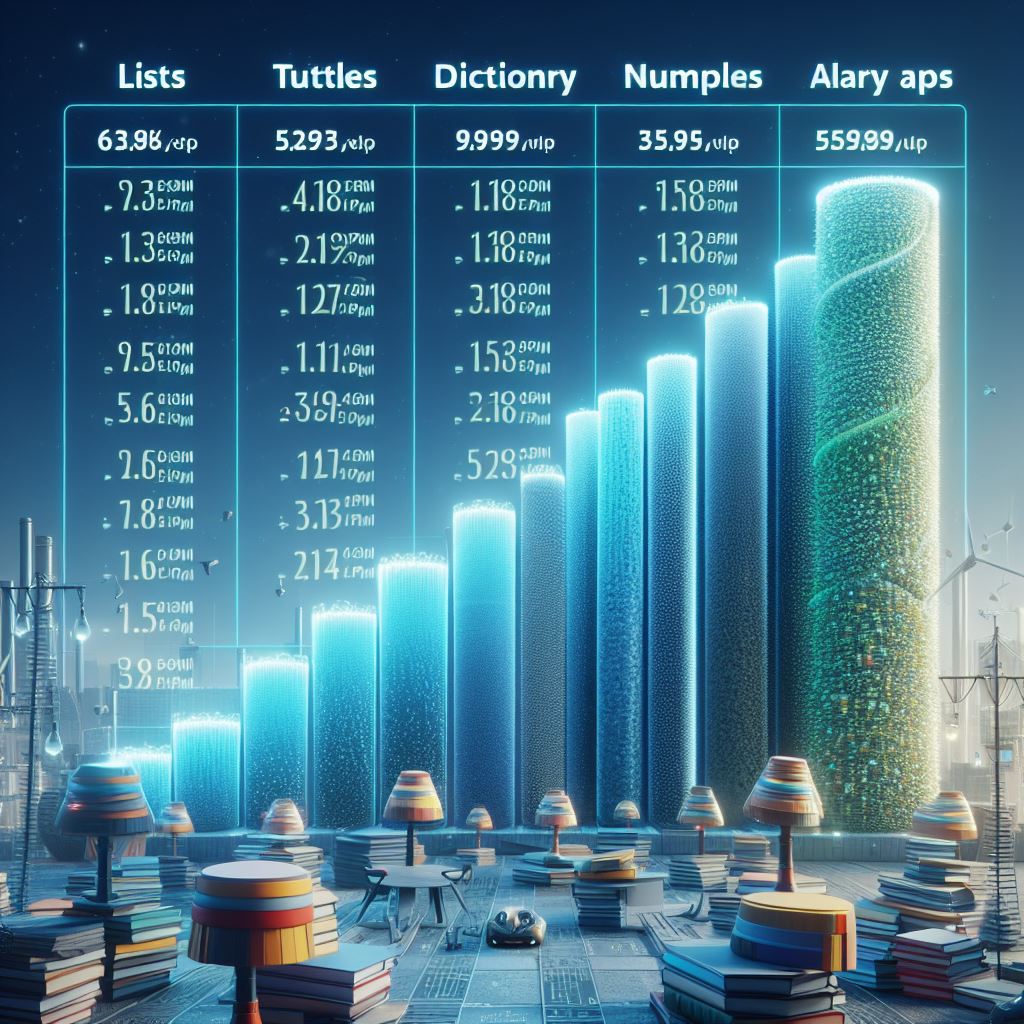
The “fastest” data structure for retrieval in Python depends heavily on the specific characteristics of your data and retrieval patterns. Here’s a breakdown of some options:
Basic structures:
- Lists: Good for accessing data by index, especially at the beginning or end. Less efficient for random access in the middle.
- Dictionaries: Excellent for retrieving data by unique keys, very fast for lookups with minimal iteration.
- Tuples: Immutable lists, useful for fixed data and slightly faster than lists for lookups by index.
Specialized structures:
- NumPy arrays: Optimized for numerical data, very fast for mathematical operations and vectorized access.
- Pandas DataFrames: Built on NumPy, excellent for structured data with labeled columns and rows. Faster than pure Python dictionaries for certain operations like filtering and grouping.
- Sets: No duplicates, good for checking membership efficiently.
Considerations:
- Data type: Numeric data often benefits from NumPy arrays, while structured data might prefer DataFrames.
- Retrieval pattern: Frequent random access favors dictionaries, while iterating sequentially might be faster with lists.
- Memory footprint: NumPy arrays can be more memory-intensive than plain Python data structures.
Benchmarking:
Ultimately, the best way to determine the fastest structure for your use case is to benchmark different options with your specific data and retrieval patterns. Python libraries like timeit or cProfile can help you measure performance differences.
Additional tips:
- Consider data compression if memory footprint is an issue.
- Profile your code to identify performance bottlenecks.
- Use appropriate indexing/searching techniques (e.g., binary search for sorted lists).
- Explore third-party libraries like
Daskfor handling very large datasets.

So Dictionaries are the fastest data structure for retrieval data in memory in Python, as they use hash tables and offer constant-time access.
Lists and tuples are slower, as they require linear search.
NumPy arrays and Pandas DataFrames are optimized for numerical operations, but may not be as fast as dictionaries for simple lookup tasks.
However, the choice of data structure may depend on other factors, such as memory usage, ease of manipulation, and compatibility with other libraries. This article discusses some of the trade-offs involved in choosing the best data structure for your needs.
Remember, the “fastest” option is not always the best fit. Choose the structure that balances performance, memory usage, and maintainability for your specific needs.
Aayushman is a Technical consulting intern at Masterkeys. He is a second year undergraduate, currently pursuing his B.Tech from IMSEC – Institute of management studies engineering college, Ghazaibad. He is a highly enthusiastic individual with a keen interest in Machine learning, Data science and AI and an avid reader of the latest developments in these fields.



